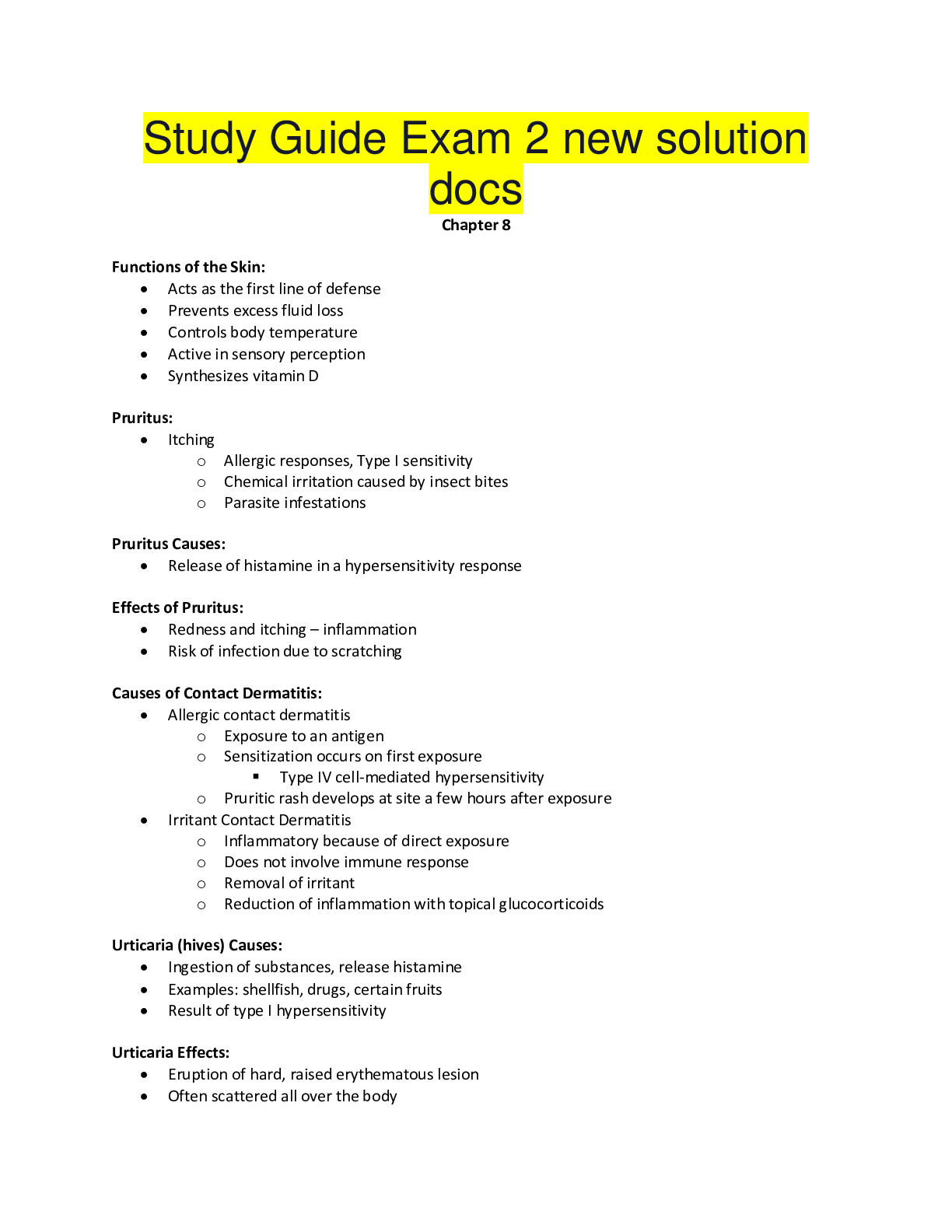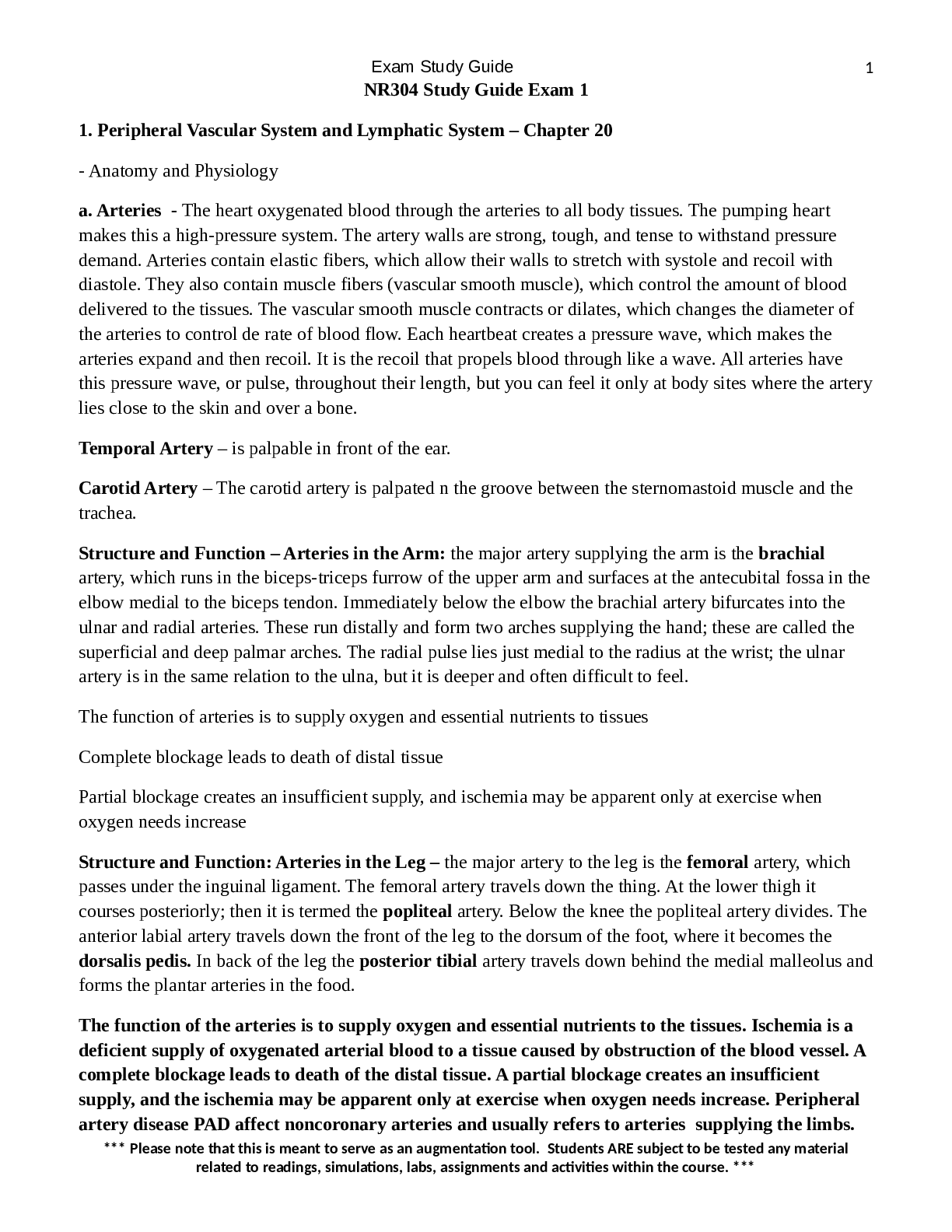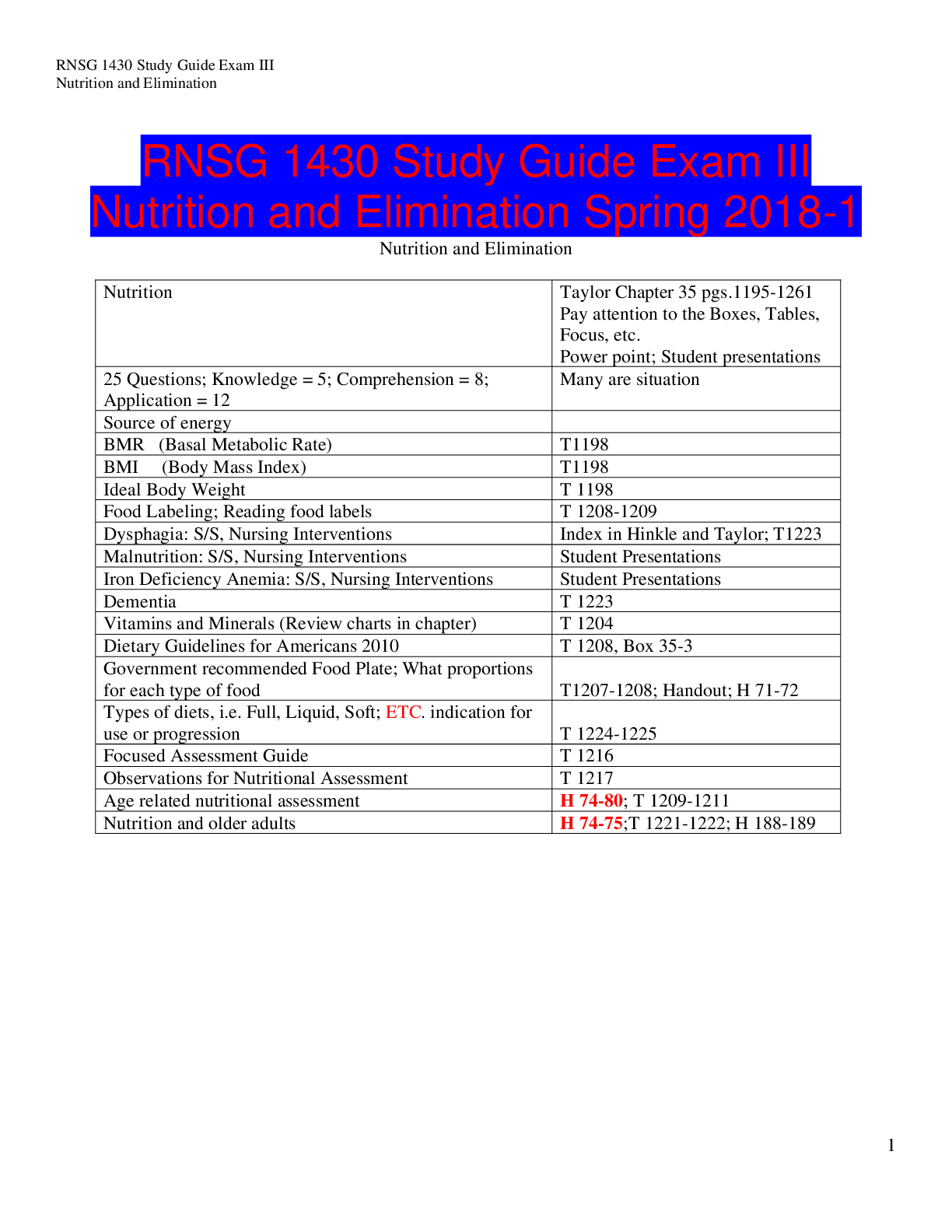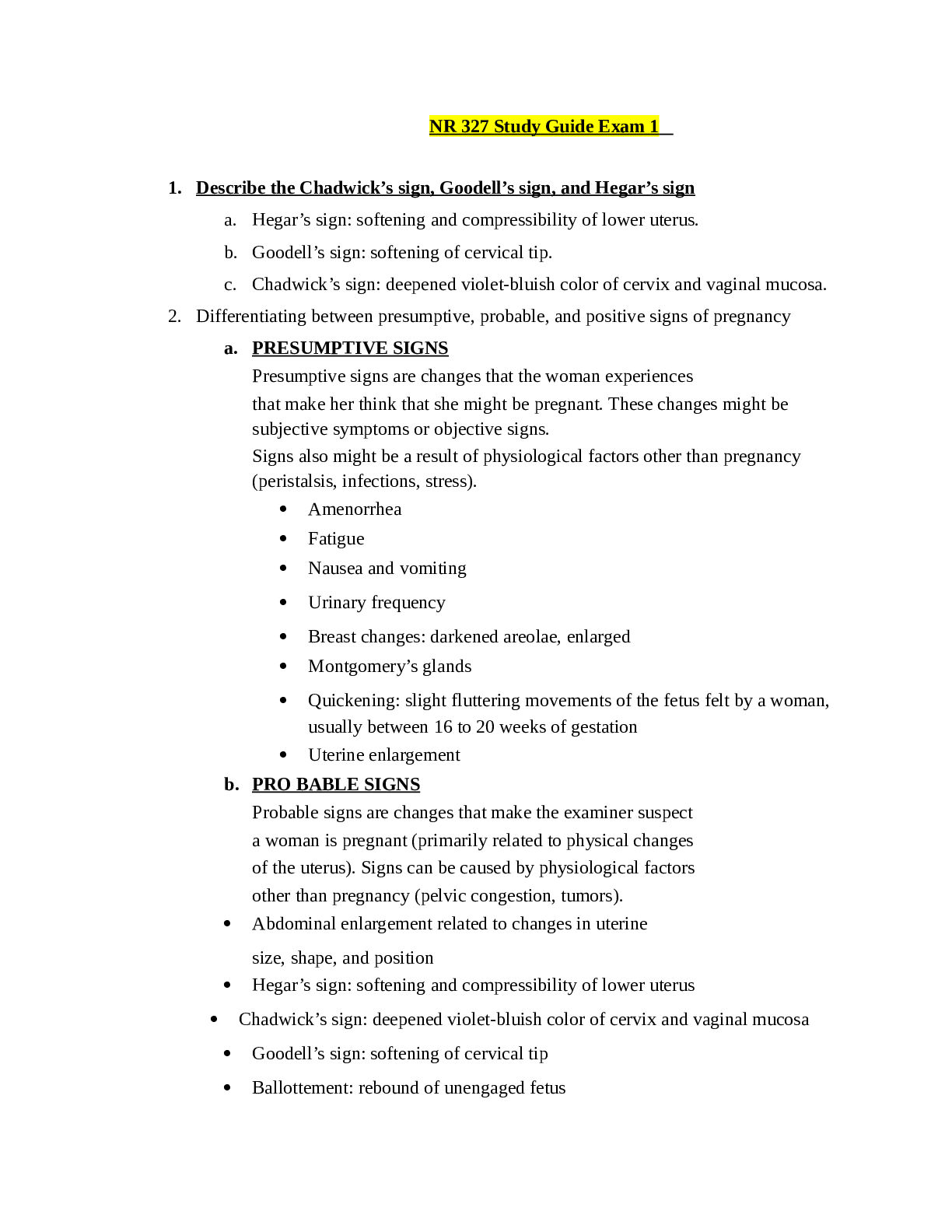*NURSING > STUDY GUIDE > NR328 – Study Guide Exam 1 (All)
NR328 – Study Guide Exam 1
Document Content and Description Below
NR328 – Study Guide Exam 1 Perspectives of Pediatric Nursing 1 Review the major categories of pediatric health promotion; what are the major health issues affecting children today and how are they... influence by the child’s environment? Major Categories of Pediatric Health Promotion A. Development • Surveillance of the changes that occur in human beings between birth and the end of adolescence o physical, psychologic, and emotional • Health promotion is based on continuous screening and assessment for early intervention if problems are found • It depends on each stage of development o Infancy: the most dramatic time for development ▪ Physical, motor, cognitive, emotional, and social development occurs ▪ Parent interaction with infant is key for optimal development o Earl childhood ▪ Parents need to apply anticipatory guidance to identify development delays o Middle childhood ▪ Surveillance from parents to strengthen • Cognitive and emotional attributes • Communication skills • Self esteem • Independence o Adolescents ▪ Their level of maturity is different for each individual • Physical, social, emotional B. Nutrition • Infancy o Human milk is the preferred form of nutrition for all infants. ▪ Breastfeeding is the best: provides the infant with micronutrients, immunologic properties, and enzymes that enhance digestion and absorption of these nutrients. • Early childhood o Eating habits are established during the first 3 years of life, ▪ The nurse is instrumental in educating parents on good the importance of nutrition. o Eating preferences and attitudes to food are established by family influences and culture. • Adolescence o Parental influence diminishes o The adolescent makes food choices related to peer acceptability and sociability. ▪ Choices may be detrimental, leading to chronic illnesses like • Diabetes, obesity, chronic lung disease, hypertension, cardiovascular risk factors, and renal disease. • Child environment affects Nutrition o Families with lower incomes, homelessness, and migrant status may lack the resources to provide nutritious foods ▪ fresh fruits and vegetables, and appropriate protein intake. o Risk of nutritional deficiencies with growth and developmental delays, depression, and behavior problems. C. Oral Health • Early Childhood o Preventing dental caries and developing healthy oral hygiene habits o Dental caries is the single most common chronic disease of childhood. ▪ One in five children between the ages of 2 and 4 years has visible cavities. ▪ May begin before the first birthday and progress to pain and infection • Child environment affects Oral Health o Low-income families: ▪ Children are twice as likely to develop tooth decay and ▪ Only half as likely to visit the dentist o Early childhood caries is a preventable disease ▪ Nurses play an essential role in educating children and parents • drinking fluoridated water • Instituting early dental preventive care. • Oral health care practices prevent destructive periodontal disease and dental decay. 2 Be able to recognize and define the main childhood health problems that exist, know the associated risk factors, and how these problems vary between age groups, genders, and ethnicities. Childhood Health Problems A. Child’s environment that affects health: Pediatric Social Illness, • Refers to the behavior, social, and educational problems that children face. • Includes poverty, violence, aggression, school failure, and adjustment to parental separation and divorce. o Mental health issues cause challenges in childhood and adolescence. • Groups of children who are at highest risk o children born prematurely or with Very Low Birth Weight (VLBW) or Low Birth Weight (LBW), o children attending child care centers, o children who live in poverty or are homeless, o children of immigrant families, and o children with chronic medical and psychiatric illness and disabilities B. Obesity and Type 2 Diabetes • Childhood obesity: the most common nutritional problem among American children, o epidemic proportions o Associated with type 2 diabetes. o Prevalence of overweight children doubled between 1980 and 2000 o Prevalence of overweight adolescents tripled between 1980 and 2000 • Obesity in children and adolescents defined as: o body mass index (BMI) at or greater than the 95th percentile for youth of the same age and gender. • Factors that contribute to obesity o Poor nutrition habits .......................................................................CONTINUED........................................................................ [Show More]
Last updated: 1 year ago
Preview 1 out of pages
Instant download

Buy this document to get the full access instantly
Instant Download Access after purchase
Add to cartInstant download
Reviews( 0 )
Document information
Connected school, study & course
About the document
Uploaded On
May 02, 2021
Number of pages
Written in
Additional information
This document has been written for:
Uploaded
May 02, 2021
Downloads
0
Views
4


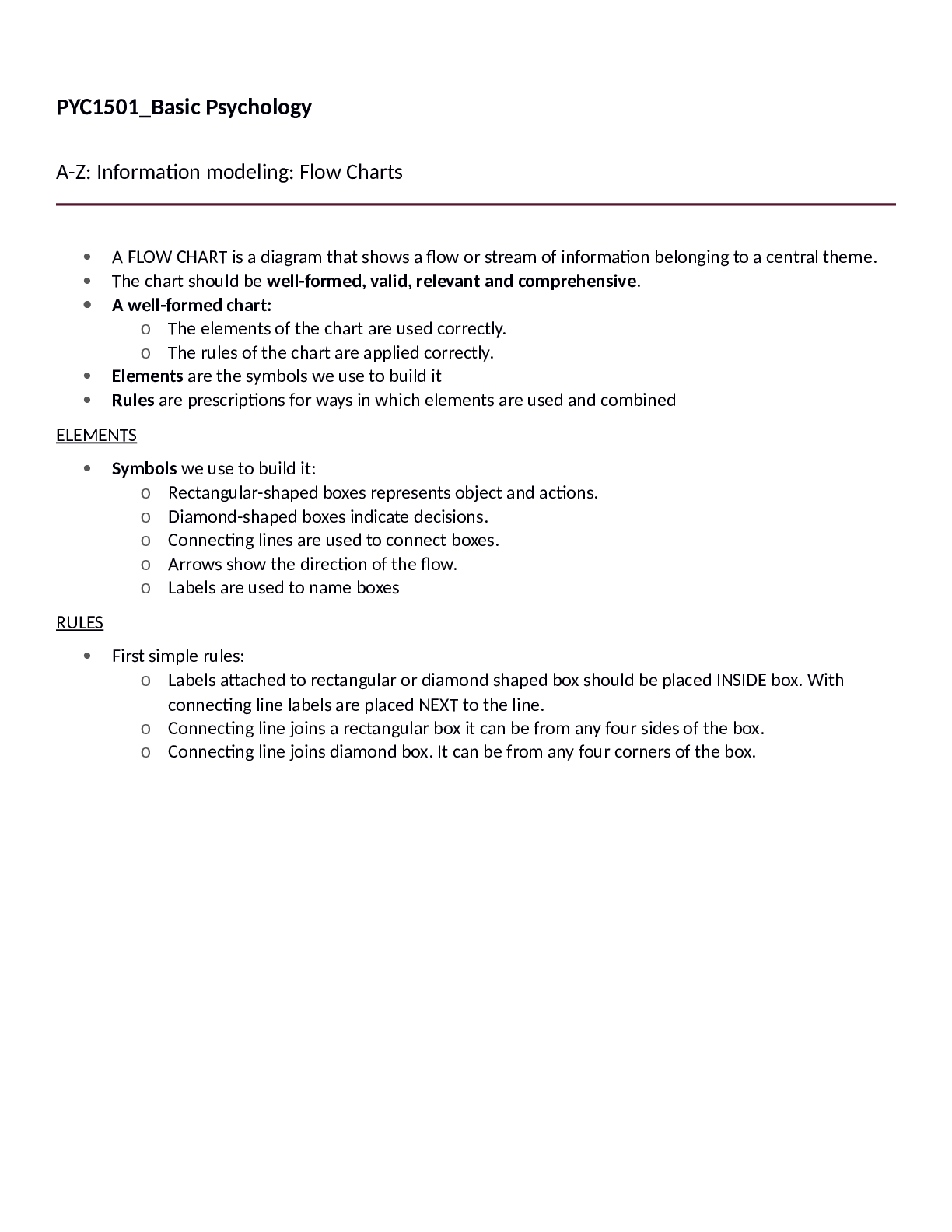
.png)


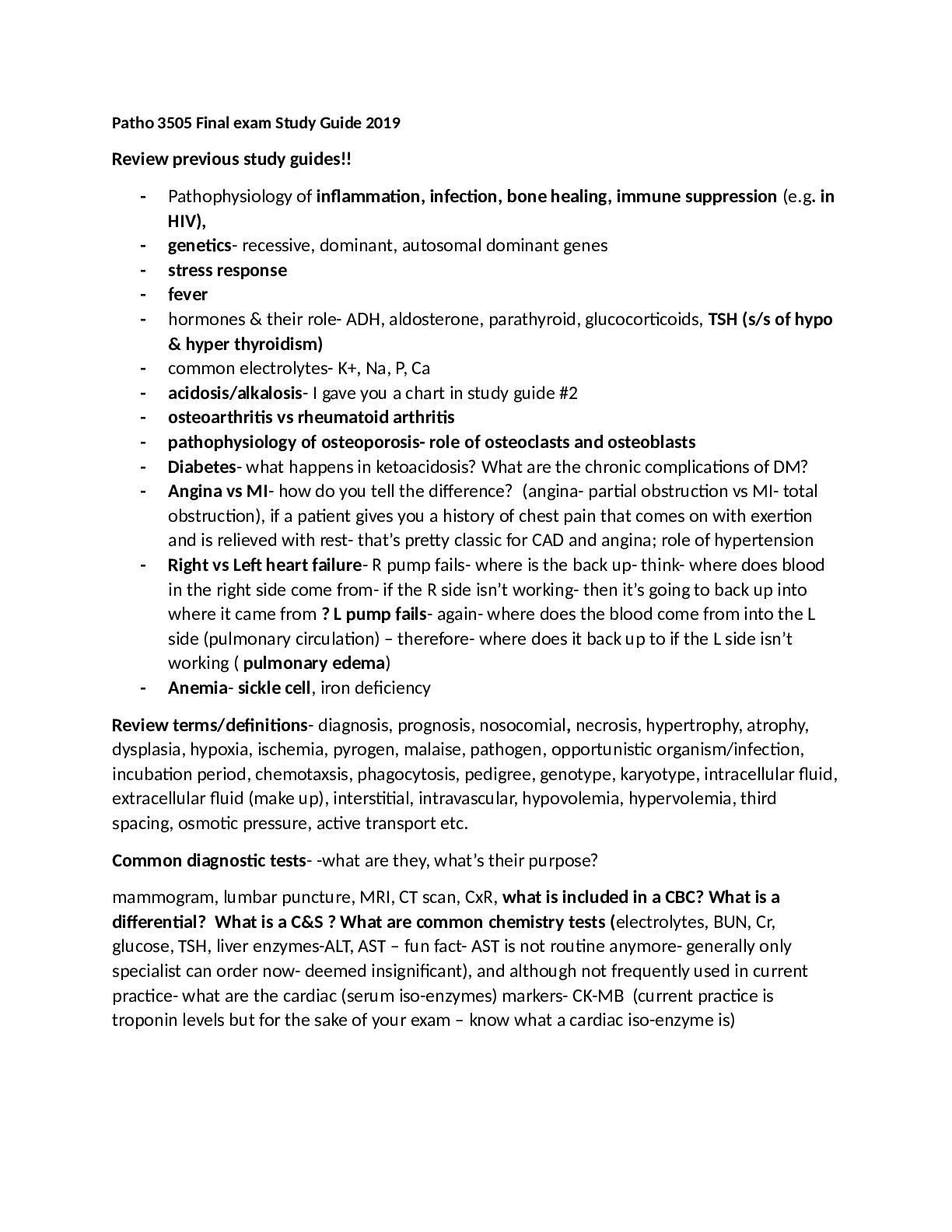

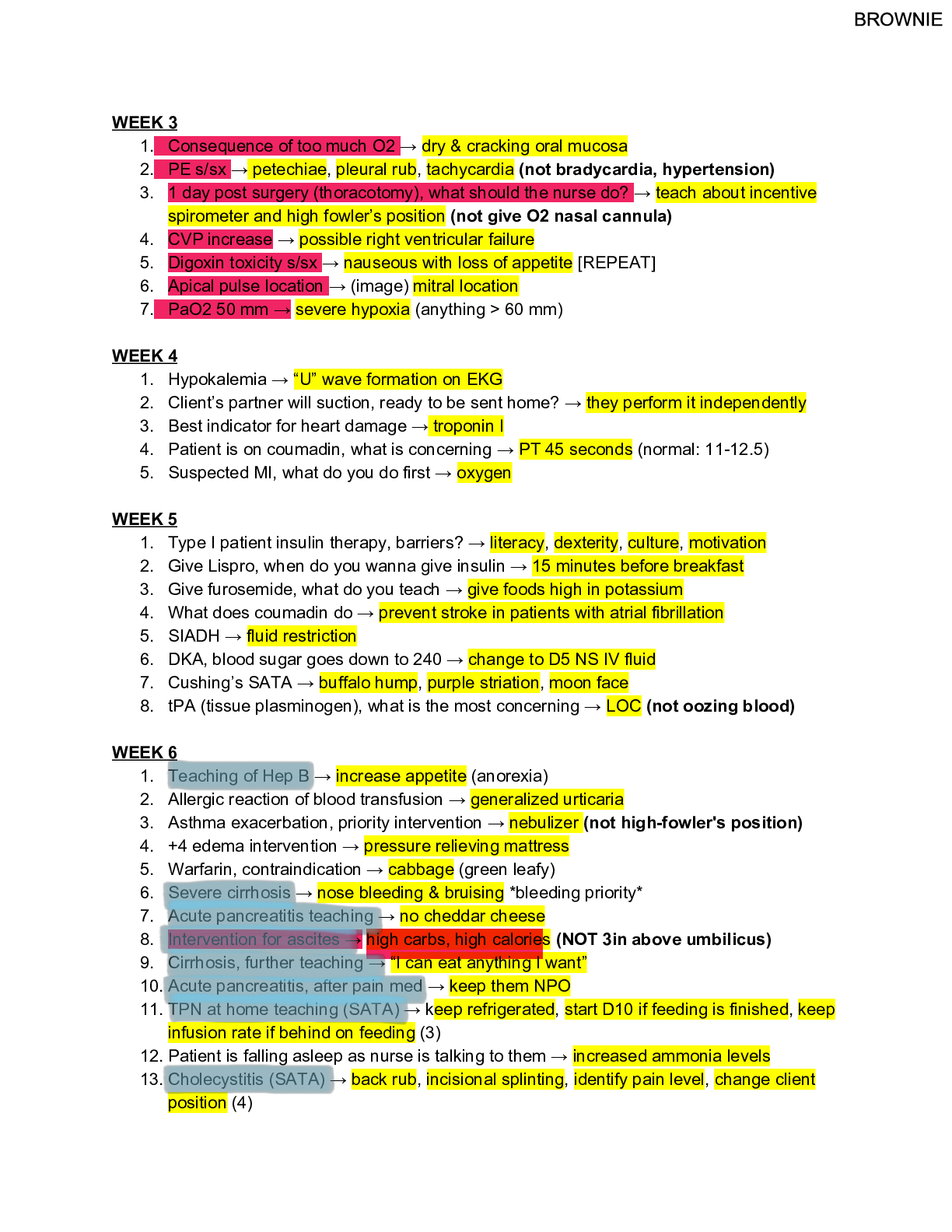


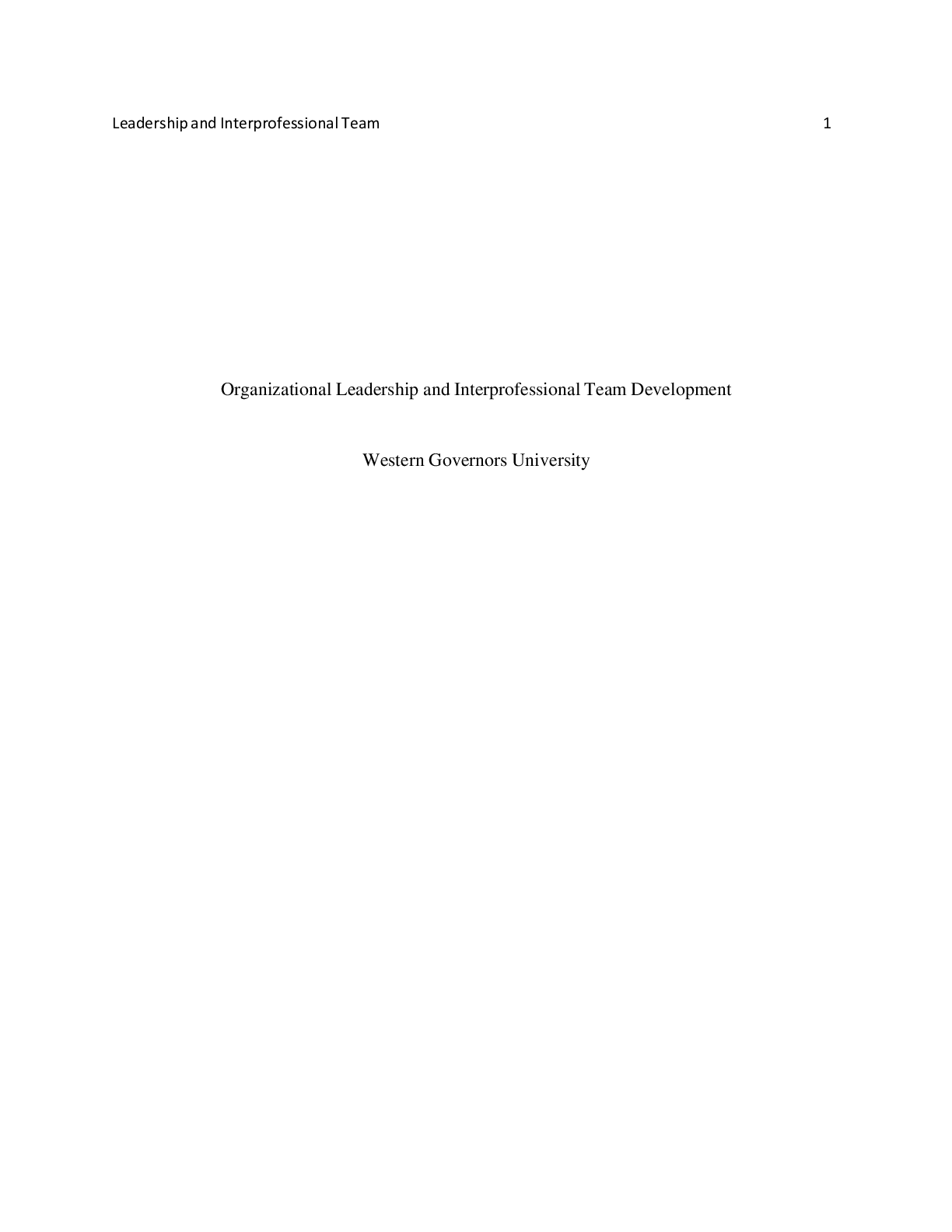


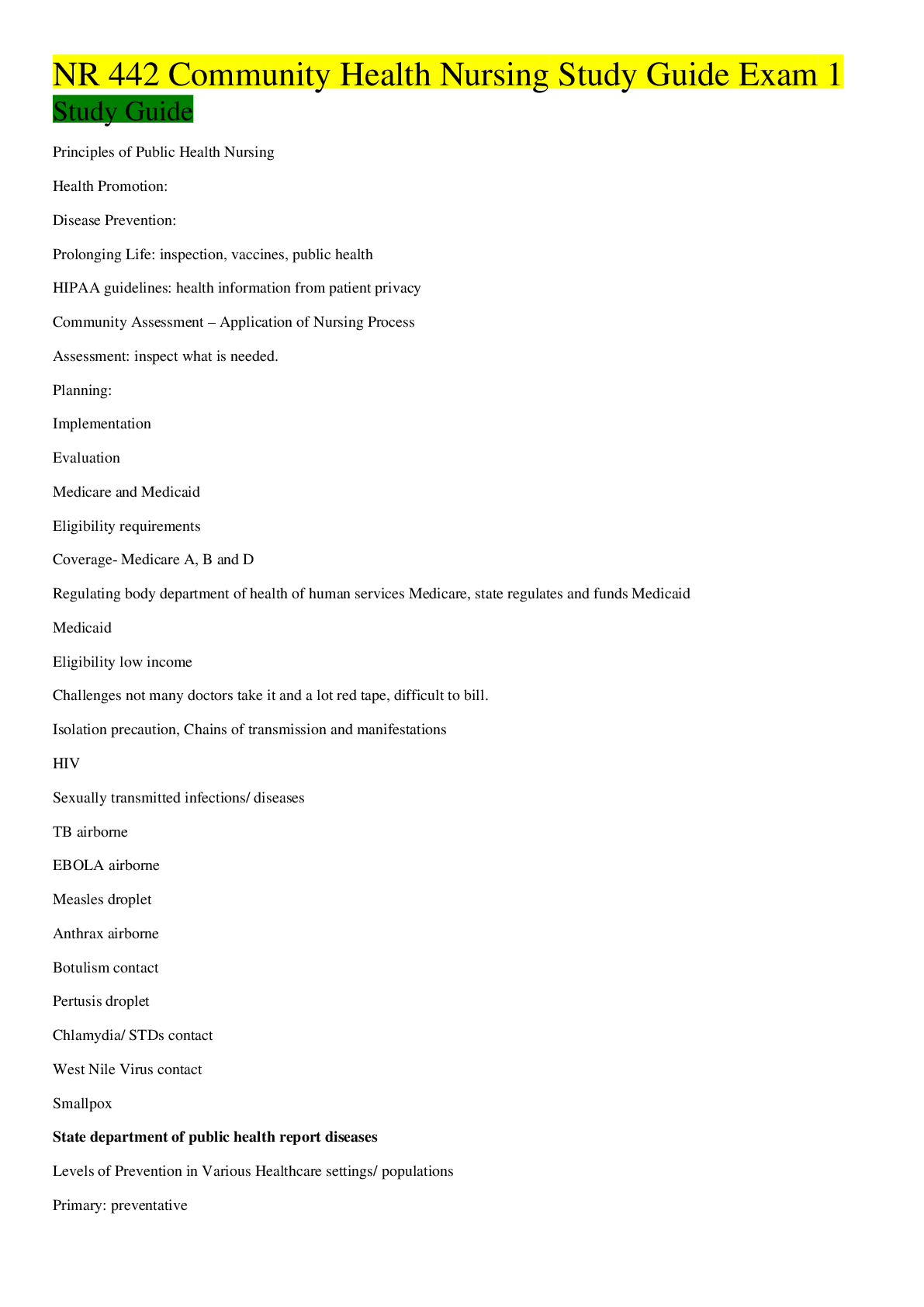
.png)

.png)
